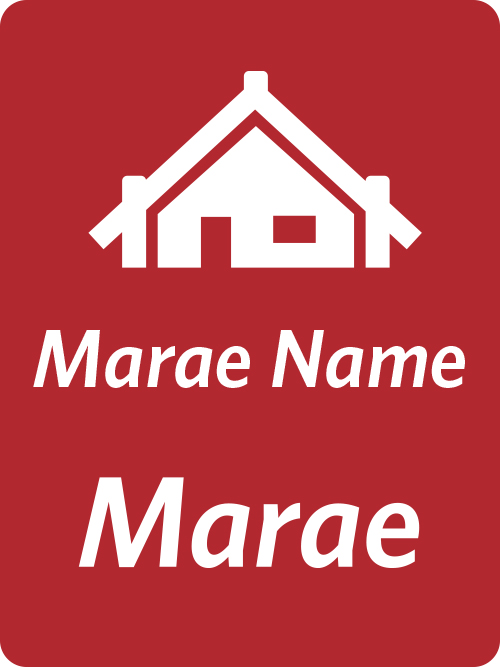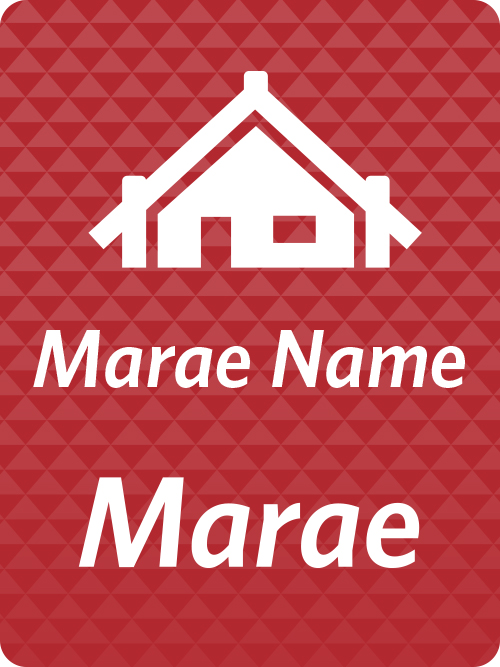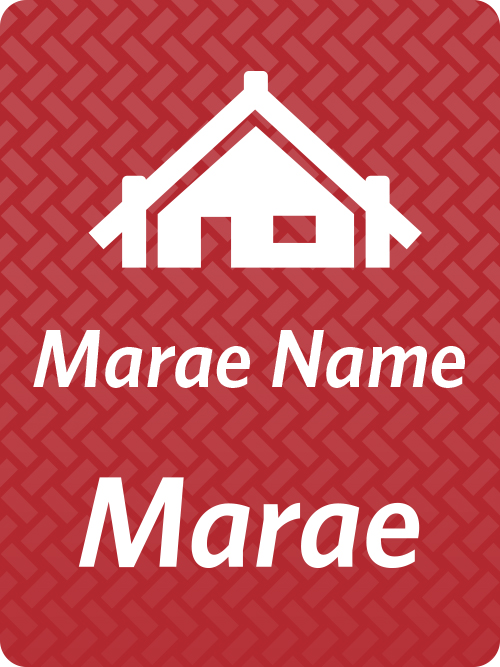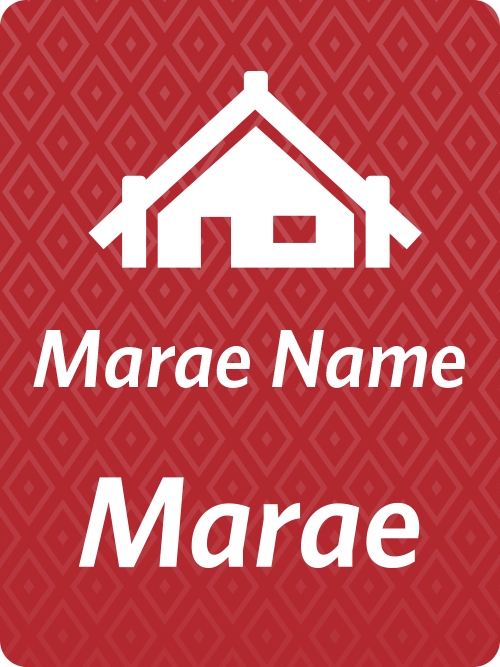Published: 6 October 2022 | Category: Guidance for specialists | Audiences: Communities, Local & regional government
The cultural marae sign depicts the whare tupuna (ancestral meeting house) found on marae. The background colour is red oche (kōkōwai) which is a colour of cultural significance to Māori. Many of the carvings found on marae are painted in a shade of red oche.
The sign should be used together with the yellow marae pedestrian hazard sign – which shows a kuia (elderly lady) and tamaiti (child).
Marae pedestrian hazard sign(external link)
Traffic signs on local roads are managed by the local council and traffic signs on state highways are managed by Waka Kotahi NZ Transport Agency. The category of the road a marae is located on will determine whether you need to discuss traffic signage with either your local council or the regional office of Waka Kotahi NZ Transport Agency.
The cultural marae sign should be located near the main entrance of the marae or before the marae if used as directional signage (direction arrow or distance to marae). Specific placement of signs will be determined in conjunction with the marae and the local road safety engineer.
The marae also has the option of using a generic Māori motif pattern if they choose.
The five background motif options for cultural marae signs are:

No motif

Niho taniwha motif

Harakeke flax weave motif

Poutama motif

Patiki motif